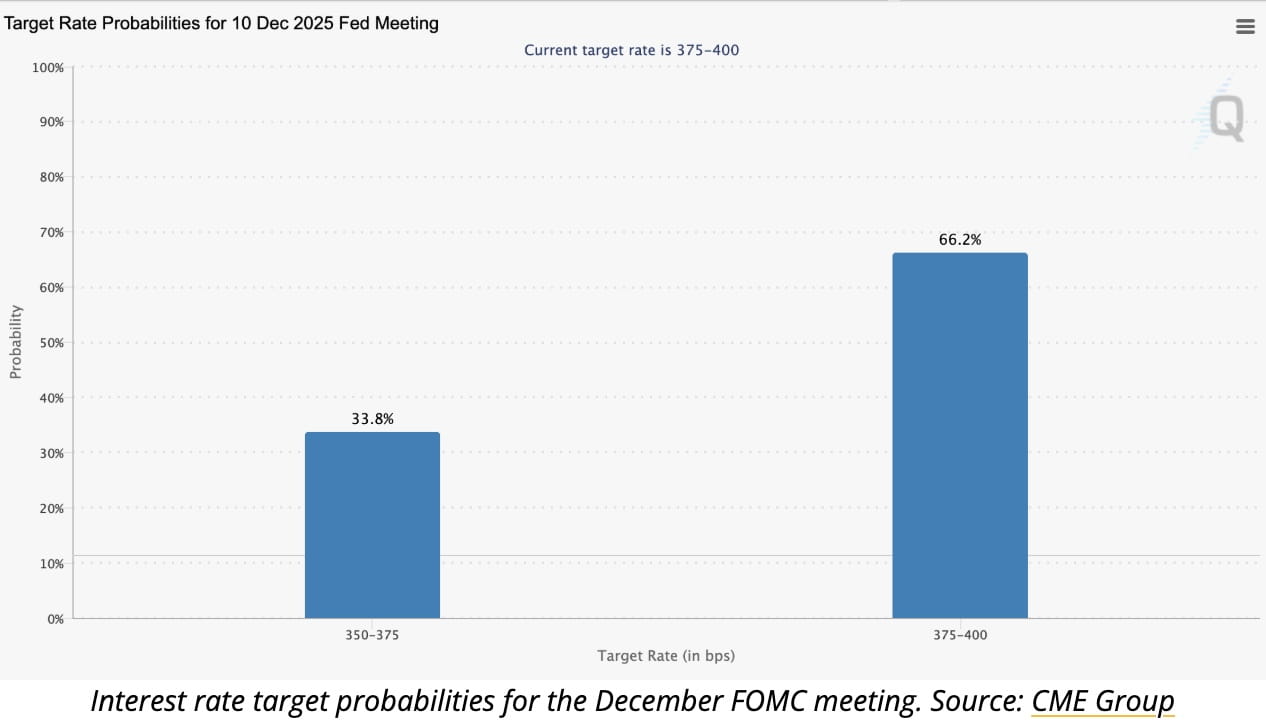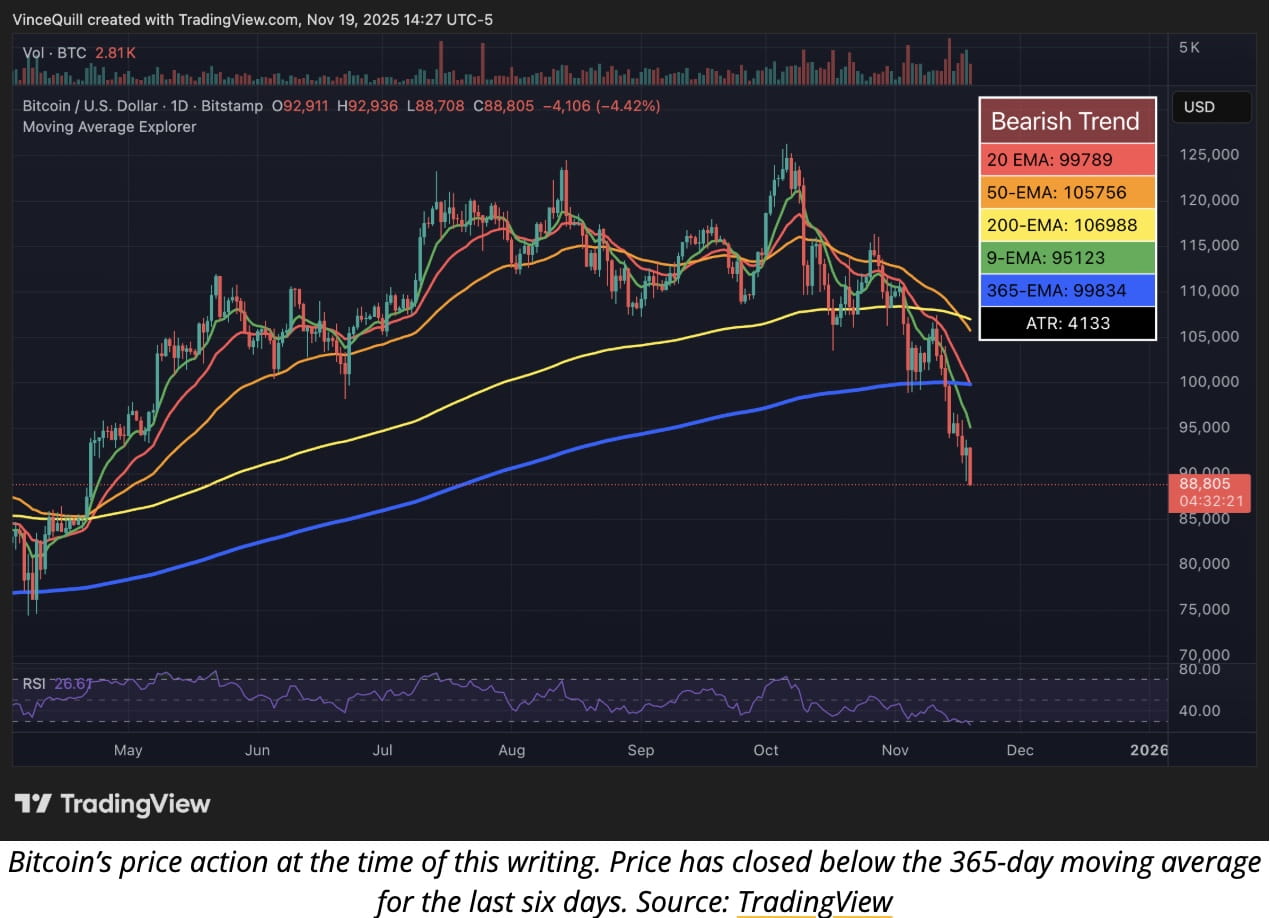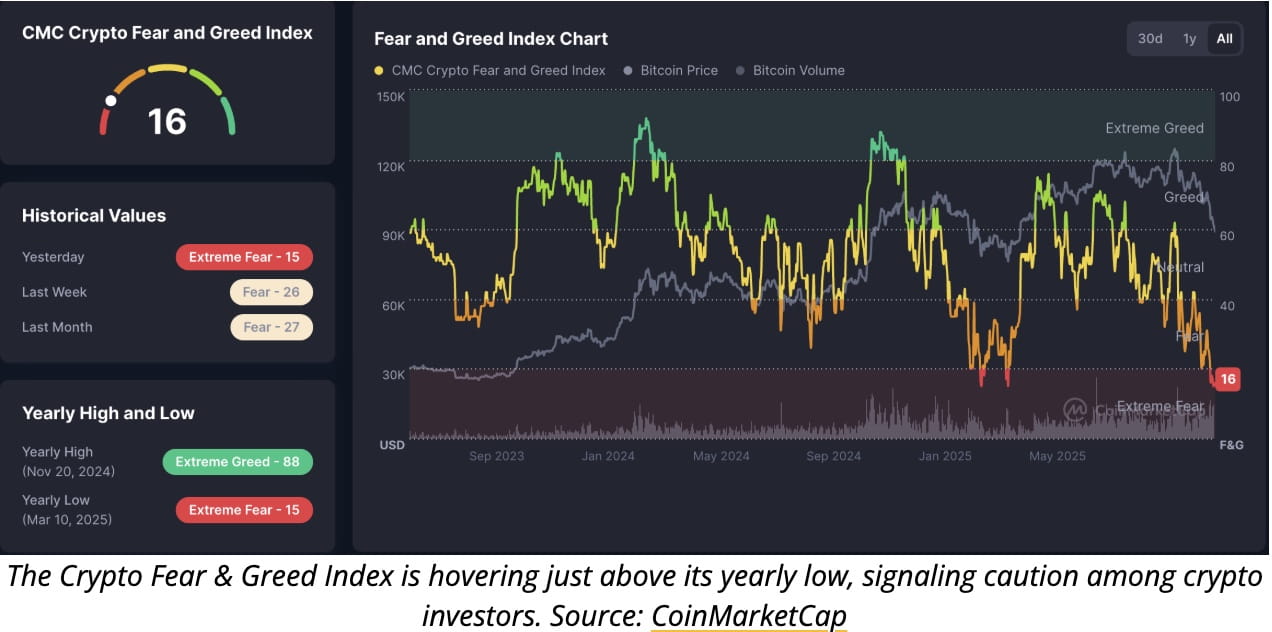Odds of a Federal Reserve rate cut at the December FOMC meeting have plunged to 30%, sharply lower than the 50% probability seen just a day ago and far below the 98% conviction from one month earlier, according to CME’s FedWatch tool. The collapse comes amid a growing economic data blackout driven by the recent government shutdown and deep divisions within the central bank.
What to Know
The probability of a December Fed rate cut is now 30%, down from 50% last week and 98% in October.
The Labor Department will not release October jobs data due to the government shutdown.
Fed minutes show sharp disagreements among policymakers on whether to pause or reduce rates.
Bitcoin briefly traded around $91,700, up 0.8% despite broader market fear.
Prediction markets show rate-cut odds between 33% and 70%, depending on the platform.
Fed December Rate Cut Odds Fall as Data Blackout Deepens
The dramatic drop in Fed December rate cut odds highlights the growing difficulty for policymakers as they prepare for the final FOMC meeting of the year. The Labor Department confirmed it will not release October nonfarm payrolls, marking the longest government data blackout in modern U.S. history.
Without fresh employment data, inflation readings, or key economic indicators, analysts warn the Federal Reserve may be forced to rely on incomplete information when deciding whether to cut rates for the first time in the current cycle.
Minutes from the October meeting released Wednesday show a divided Fed, with several officials arguing for a pause while others favored a 25 bps cut.
Prediction Markets Show Growing Uncertainty
CME FedWatch now places rate-cut odds at 30%, while prediction platforms show slightly more optimistic—but still shaky—probabilities:
Kalshi: 70%
Polymarket: 67%
CME: 30%
The divergence highlights the market’s struggle to price a December move without reliable macroeconomic data.

According to analyst commentary from The Kobeissi Letter, traders remain hesitant due to lingering inflation risk and uncertainty about the Fed’s tolerance for easing prematurely.
Crypto Market Hit by Fear as Bitcoin Slips Below $89,000
The collapse in rate-cut expectations has intensified volatility across crypto markets. Bitcoin fell below $89,000 on Wednesday, failing to defend a major support region and extending a multi-day slide below its 365-day moving average.
Adding to bearish sentiment:
BTC’s 50-day EMA crossed below the 200-day EMA, forming a classic “death cross.”
Crypto Fear & Greed Index fell to 16, signaling “extreme fear”—just one point above its yearly low.
Some analysts now warn this could mark the start of a deeper crypto downturn if macro and liquidity conditions continue to tighten.

Analysts Warn of Potential Drop to $75,000 Before Recovery
Market strategist Benjamin Cowen said Bitcoin must rebound within the next week to avoid a steeper decline:
“The time for Bitcoin to bounce, if the cycle is not over, would start within the next week,” Cowen said Sunday.
“If no bounce occurs, we likely see another dump before a larger rally back to the 200-day simple moving average, which would then mark a macro lower high.”
Several analysts point to a possible retest of $75,000 as Bitcoin searches for a long-term support floor.

Why the Fed’s December Decision Matters for Crypto and Risk Assets
A Fed rate cut would:
Lower borrowing costs
Boost liquidity
Support risk-on assets like crypto
But with data uncertainty, policy disagreements, and inflation concerns, the odds now favor a longer wait before the Fed begins easing.
Macro analysts say markets may remain highly volatile through year-end, especially without upcoming economic releases to guide expectations.

